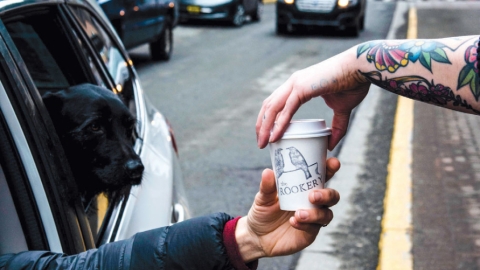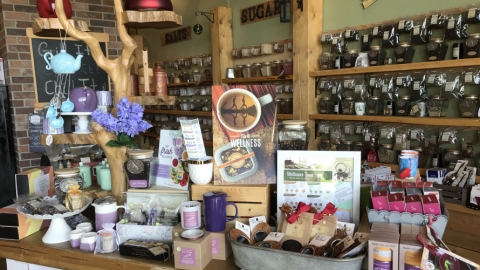An Industry in Suspended Animation
Some restaurants have closed. Others are surviving on their owners’ savings and grant money—but just barely.
It’s the first week of December 2020. Alaska’s COVID-19 numbers are hitting record after record. The Craigslist job listings for food, beverage, and hospitality workers in Anchorage and Fairbanks tell the tale of an industry in trouble; ad after ad seeks fast food workers or DoorDash delivery drivers. Ads for independent restaurants? For hotel food service? For pretty much anything that’s not a national chain? Nonexistent. Kitchen jobs on the Slope? Okay, there are some. And the food co-op in Fairbanks needs a deli manager. So there’s that.
Same goes for the rest of the state. Where there are chain restaurants, there are some job openings. Otherwise, it’s an industry—from owners to bartenders, busboys, and servers—collectively holding its breath. As of October, Alaska was down 4,300 restaurant jobs from February’s numbers, according to data from the National Restaurant Association. That’s a 20.7 percent drop. Back in 2018, that group, in cooperation with the Alaska Cabaret, Hotel, Restaurant and Retailers Association (CHARR), reported that Alaska’s restaurant industry was 1,485 locations strong, supplied 10 percent of the state’s jobs, and took in about $1.8 billion that year. A then-hopeful addition to those stats was that the industry was expected to grow jobs an additional five percent by 2029.
All of that faded hope makes the current decline in numbers even more brutal. At The Writer’s Block Bookstore and Cafe in Anchorage, a business that’s part restaurant part events space, part bookstore, “the result has been a dramatic loss of revenue,” says Vered Mares, the Block’s operating partner. “Yeah, dramatic, I mean, 50 percent of [the revenue] we would normally be doing and that’s pretty universal across the board for almost all restaurants.”
Mares says that, to some degree, The Writer’s Block team has been lucky as she’s been able to devote a good deal of her time to going after grant money. “Wherever it is, whether through the SBA or PPP, or AK Cares or the Municipality or the hospitality industry, whatever it is, I had made it my job to be on top of it. Not every business had that ability, not every business gets approved.”
She says the grant money is “the only reason that we will continue to be open for the near term, and I can’t speak midterm or long term but for the near term.” An additional challenge? The constant changes in mandates that have forced restaurants to quickly shift how they do business. It’s been a little of this, a little of that. Local governments around the state have bounced back and forth with mask mandates, as well as calls for restaurants and bars to limit capacity or close indoor dining. With restaurant profit margins always notoriously low, keeping up with the ongoing changes has been hard for restaurant owners to stomach and endure.
In past years, residents down the Kenai and throughout Southcentral knew they could depend on The Cookery in Seward for innovative dishes made with local ingredients year-round. Not this winter. The Cookery closed for the season on September 7th.
“After being able to open to, basically, 50 percent capacity through almost all of the summer, there’s just no way to make the money to make it through the winter,” says Kevin Lane, chef/owner of The Cookery LLC, which also owns The Lone Chicharron, a taqueria. The Small Business Administration’s Paycheck Protection Program “helped us out through the first half of the summer,” says Lane. “We were keeping our fingers crossed but by the end of July, we knew there was just no way we could stay open for the wintertime.” Winter, Lane adds, has never exactly been a money-making time. The Cookery stays open during the fall and winter months only because it usually pulls in enough revenue during the summer to balance things out. Not so in 2020. As of the end of November, the restaurant’s revenue was down about 50 percent from the same period in 2019.
Ninety miles north of The Cookery, Girdwood’s Spoonline Bistro has, owner Alexandra Fletcher says, “been recreating ourselves” with the help of her “awesome staff.” That’s meant, at times, rolling back to the restaurant’s food truck roots and selling breakfast burritos out the door. The Spoonline opened as a “proper restaurant” with a beer and wine license in 2018.
Back in March, Fletcher says she was “really on board with closing and doing everything we could to mitigate the spread of a pandemic.” She knew the health and wellbeing of people had to come first. But with inconsistent rules throughout Alaska and the state’s early success in staving off the spread of COVID-19 now wasted, closures have gotten harder to take. And the Municipality of Anchorage’s limited hunker down order for December, the restaurant’s busiest month of all, was a real slap in the face to restaurant owners and employees who had been doing all they could to keep people safe.
“As the numbers were rising in the fall, it would have been a better time to close. Now we are still in a situation where we are blaming the restaurant industry but there is no proof that people are getting COVID in restaurants,” she says. “It’s outrageous to me that we are closing our restaurants here without a statewide mandate. To put all the pressure on Anchorage bars and restaurants is outrageous. That’s a bitter pill. I don’t know that this is actually going to mitigate anything.”
Instead, Fletcher says, she thinks it would be better to stop “painting everybody with this broad brush” and, instead, “specifically target places on a case-by-case basis that aren’t doing such a great job.”
Fletcher remains hopeful however, that “we can all hold on until spring when I think things will be better,” including weather for outdoor dining. All the outdoor heaters and blankets in the world can’t exactly make outdoor service an easy sell in Alaska.
Some spots in Alaska, of course, need summer travelers even more than others. Though tourism makes up a significant percentage of revenue for restaurants throughout the state, no place was hit harder by the death of the summer cruise season than Southeast Alaska. One summer earlier, Alaska cruises “earned the top spot as the most booked domestic vacation,” according to a survey by the Travel Leaders Group. According to Cruise Lines International Association Alaska, 2020 should have been a banner year for cruises to the state, with ten new ships expected to join the already significant fleet. Those cruises, of course, never materialized, and the early 2021 cruise season is already seeing cancellations.
Patti Mackey, president and CEO of the Ketchikan Visitors Bureau, says local restaurants tried to cope the best they could. Measures included “downsizing staff, investing in delivery vehicles, [and just] trying to figure out how to survive. In general, we have a lot of businesses that are very worried about surviving if we don’t have a visitor season next year.”
For now, most restaurant owners throughout Alaska are continuing to do what they can to keep their business alive, their staff employed, and their customers happy. It hasn’t been unusual in the past months to call a restaurant to place an order only to be met with a voicemail message like the Pump House’s from the first week of December: “[A] staff member was exposed to COVID outside of the restaurant… the restaurant will be closed [until] December 8th…”
“Closing, out of an abundance of caution”—the phrase that’s become the go-to for businesses and governmental bodies throughout the pandemic—gives restaurants the chance to deep clean and test all other staff members, but it can lead to lost money not just in revenue but also in food waste. And remember, open or closed, utilities, rent, and mortgages still serve up some serious overhead. But some restaurants, like The Red Chair Café in Anchorage, tried to put the resources they had to use in order to serve community members who wanted to limit their time in stores. Before shutting down in October, the restaurant—and home to some of Alaska’s best pancakes—also sold groceries including, yes, often hard-to-source items like yeast. Toilet paper too. (The Red Chair did close in October, but the owners say it wasn’t because of COVID. They are actively looking for a new location, possibly in the Mat-Su Valley. Keep an eye on the restaurant’s Facebook page for updates.)
But Alaskans and their resilience, it’s a thing. Throughout the state, restaurant owners (and the businesses that support the industry) are doing what they can to, quite simply, keep going. Alaska Restaurant Supply, which has locations in Anchorage and Fairbanks, is running social media ads touting the ways it has “pivoted our business” by stocking supplies needed “to help keep our community healthy and keep your business moving.”
No matter how resilient the owners or staff may be, at some point, the money just runs out. “Under the current climate,” Mares says the question is, “how long can they hang on before they fail?”

















